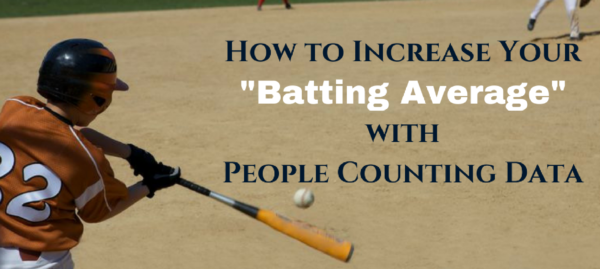This article originally appeared on Data-Informed.com
Every day, retailers wonder how they can increase sales, optimize staffing levels, and improve store performance across multiple locations. It sounds like a lot to ask for, but it’s possible to get all that and then some. And it starts with people counting.
People counting is a critical part of tracking retail conversions, arguably the most crucial metric for retailers. With that in mind, it’s hard to understand why it’s so woefully under-utilized. Failure to get a firm hand on retail conversion rates is a massive missed opportunity.
Shifting the focus to conversion can completely transform a retail organization, but to make this happen, retailers need to count people.
The Secret to Retail Success
At its core, the secret to retail success doesn’t seem like much of a secret at all:
- Step 1: Get people into the store.
- Step 2: Get them to buy something while they are in there.
- Step 3: Reap the rewards.
But what if it seems like the store is busy all the time, but that steady increase in foot traffic doesn’t appear to be accompanied by a steady rise in sales? Without a firm grasp on how many people are in the store at any given time, it’s difficult to know if the sales in that same period are climbing, stagnating, or staying the same.
Related Post: Why Retailers Absolutely Need People Counting
People counting provides the two most important data points to enable strategic decision making. Retailers need to know how many people visit the store, and what percentage of them make a purchase. For the best results, this should be as close to real-time as possible, because if the queue to buy goods gets too long, the percentage of shoppers leaving empty-handed will increase very quickly. As Mark Ryski wrote in his book, Conversion: The Last Great Retail Metric, “All retailers need to measure traffic and customer conversion in their stores. If you don’t, you are flying blind.”
[xyz-ihs snippet=”TOFU2-Retail-Technology-button”]
Quick Wins from Conversion Data
Conversion data can help you understand a lot about your business. It’s the fastest way to check the pulse of the retail operation as a whole. Conversion data does more than tell you what’s going on in your business. Conversion data can do the following:
- Give a better understanding of how individual stores are performing
- Provide insight into how to help underperforming locations fare better
- Improve sales performance while minimizing costs.
Vast amounts of business intelligence are generated every day by sophisticated point of sale (POS) systems. These data-making machines allow you to dig deep into every data point, except the one data point that matters most: POS data only focuses on the sales you made. There is no indication of sales you lost.
[Tweet “POS data focuses on sales made. How do you know how many were lost? #RetailTech @alerttechinc”]
Instead of trying to wade through reams of data, you can affect dramatic changes in results by focusing on bite-sized pieces of the right data. Focusing on your conversion numbers will yield a significant bang for your buck.
When it comes to illustrating the value of simple-yet-effective metrics, I can think of no better way than to use a baseball analogy. As psychologist Paco Underhill explained in his book, Why We Buy, people counting tracks sales opportunities, and every person who enters the store is akin to an at-bat for a hitter. Following this logic, the percentage of shoppers who are converted into buyers is the batting average for the retailer.
[Tweet “Increase Your ‘Batting Average’ with People-Counting Data #retail @alerttechinc”]
In addition to tracking sales conversions, people counting can do the following:
- Measure the effectiveness of marketing campaigns
- Identify retail “power hours” that allow store managers determine proper staffing levels
- Help develop a queue management strategy
It’s good to know what questions can be answered by implementing a people-counting strategy. But perhaps even more important is knowing which questions simply can’t be answered without it.
Without people counting, you can’t know if individual stores are productive. You may be in the dark about staffing levels at different times of day, and you certainly won’t know your batting average. To quote Paco Underhill again: “You don’t know if you are Mickey Mantle or Mickey Mouse.”
[xyz-ihs snippet=”TOFU2-Retail-Analytics”]
